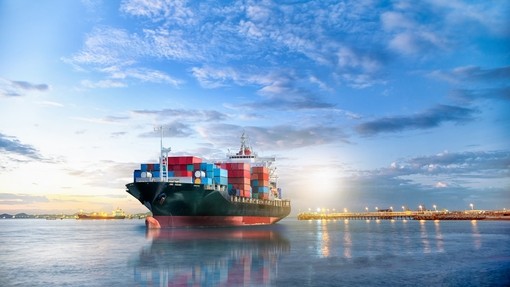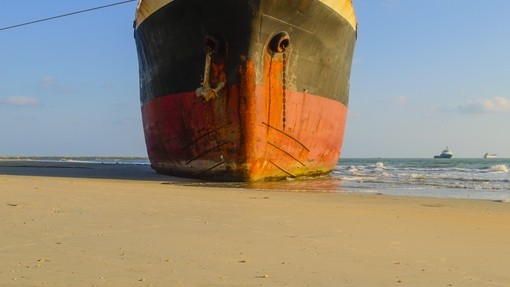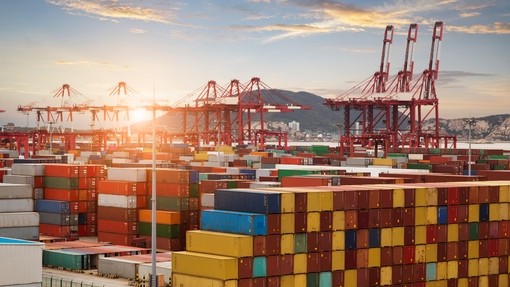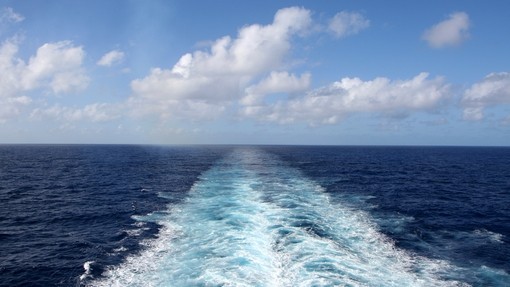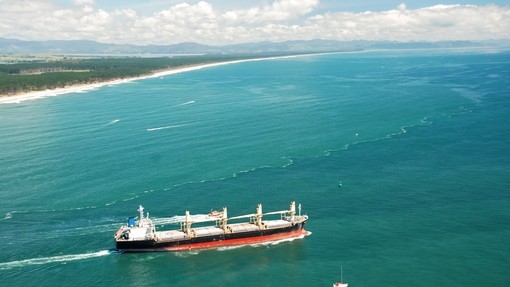UK port workers and COVID-19 (coronavirus)
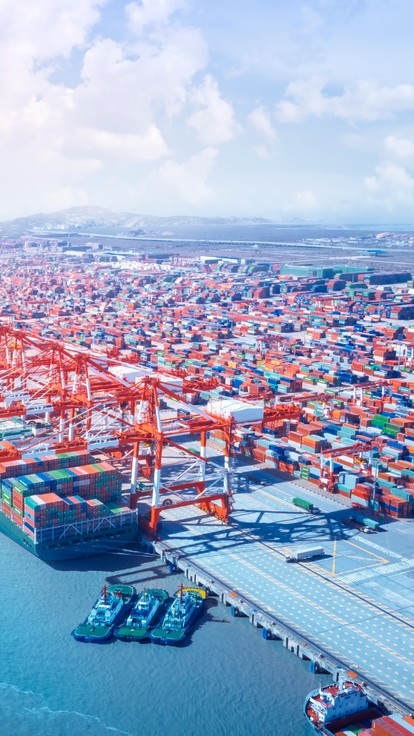
Details
A few weeks ago, we wrote a piece seeking to identify the major port-related issues associated with COVID-19. We stated that ‘the threats to the UK ports industry from the novel coronavirus are not immediate but they are nevertheless real’. Regrettably, we now know exactly how real and our worlds have been turned upside down. Here, we focus on the position of port workers, the enhanced risks that they face and the liability considerations for them and for their employers.
Key workers
On 20 March, schools across the country were closed to all but the children of ‘key workers’ and those deemed vulnerable. The Department for Education described ‘key work’ as work that is critical to the COVID-19 response; or work in critical sectors, including:
- food and other necessary goods – this includes those involved in food production, processing, distribution, sale and delivery, as well as those essential to the provision of other key goods (for example hygienic and veterinary medicines); and
- transport – this includes those who will keep the air, water, road and rail passenger and freight transport modes operating during the COVID-19 response, including those working on transport systems through which supply chains pass.
The Department for Education’s key worker list has been adopted in England, Wales and Northern Ireland. In Scotland the decision as to who is a key worker has been delegated to local authorities with employers being encouraged to think critically about which staff are to be considered ‘key’.
Accordingly, many of those working at ports are key workers. This status provides an exception to the government’s strict social distancing guidance to stay at home, allows the children of port workers to continue to attend school or other childcare settings that are now closed to the majority of pupils and permits travel for work purposes (but only where work cannot be performed from home). At most UK ports, the physical movement of cargo and pilotage of vessels cannot be carried out remotely.
The lockdown
On Monday 23 March, in order to reduce the spread of COVID-19, the UK government introduced three measures:
- Requiring the population to stay at home except for limited purposes
- Stopping all public gatherings of more than two people from different households
- Closing pubs, restaurants and other entertainment venues
Those of us who are not key workers were thereby instructed not to go to work and not to leave our houses except for limited purposes.
Requirement to work
However, key workers who are fit and well are not merely ‘permitted’ to go to work – they are required to do so. Key workers are expected to perform their duties as normal (with reference to social distancing guidance and PPE if necessary). While there are exceptions for those with even mild symptoms (which might be COVID-19) or who live with people who are exhibiting symptoms, the healthy should work.
A worker who seeks to self-isolate simply because of fear of contracting the condition will strictly be in breach of their contract of employment and employment law (unless the concerns are genuinely health and safety concerns perhaps about a lack of PPE or a system of work potentially exposing them to harm). However we understand most employers are being flexible on this for those who are shielding and protecting people who are clinically extremely vulnerable from COVID-19.
The requirement to work obviously increases the risk of a worker contracting the illness, however this will vary depending on the type of role and how the employer has implemented relevant controls. The risk is increased because;
- they have to travel to and from the port;
- they must collaborate with other workers at the port and, in some cases, with those on visiting ships;
- they may not be able to comply with the rules around social distancing at all times; and
- they are having to handle goods and cargoes coming off ships that have potentially been handled by infected crew / third parties.
The legal position
So what is the legal position with regard to a port worker who contracts the disease? What are their rights and would they be entitled to compensation?
Foreseeability of infection
In such circumstances, the risk of contracting coronavirus is clearly foreseeable. The risk of contracting coronavirus is not like the usual risks of occupational injury. The government guidance that most of us should work and stay at home are in place because the risk of travelling to and from work, and attending work might involve workers contracting a fatal disease. This is unprecedented in living memory.
Accordingly, the risk of a port worker contracting the virus is clearly significantly higher than for those of us who are following the advice to stay at home.
The employer’s duty
The common law test of an employer’s duty remains that laid down in Stokes -v- Guest Keen and Nettlefold (Nuts and Bolts) Ltd [1968]:
‘…..the conduct of the reasonable and prudent employer, taking positive thought for the safety of his workers in the light of what he knows or ought to know; … where there is developing knowledge he must keep reasonably abreast of it and not be too slow to apply it; and where he has in fact greater than average knowledge of the risks he may be thereby obliged to take more than the average or standard precautions
…‘A good employer does not merely sit back and wait for official action or regulations.’
So far so clear. A good employer will take positive steps for the safety of its workers. This will involve a risk assessment under Regulation 3 of the Management of Health & Safety at Work Regulations followed by the drawing up and implementation of a safe system of work that reflects the risks identified as part of the risk assessment.
The employer must not merely identify the risks and set out the system of work, it must also advise and educate its workforce as to what they should do or wear, and why they should do it.
Lastly, the employer must ensure that the workforce complies with the system of work. Any deviation should give rise to warnings and an escalating disciplinary system should seek to enforce adherence to the safe system of work.
This last point places a fairly heavy burden on the employer to educate its workforce with regard to risks that it itself knows little about. However, given the 24- hour coverage of the current COVID-19 outbreak and its ‘global pandemic’ status it is submitted there is sufficient knowledge to know that there is at least some risk to the employees and that there are some, minimum, steps that can be taken.
What PPE should be provided?
There is ongoing debate about the efficacy of facemasks and the UK government has on many occasions insisted that PPE is not recommended for use beyond clinical or care settings. In any event, unhappily, there is a nationwide/global shortage of masks and other PPE.
And what of social distancing at ports?
The recommendation is that workers remain two metres apart at all times. This will require the drawing up of a very strict system of work involving clear separation of workers. It will also need robust policing to ensure that workers do not have even momentary lapses. One has only to visit the local supermarket to see how difficult it is to keep to the recommended separation. The real world does not always conform to the exhortations of the law. Imagine the situation on a pilot boat with multiple personnel or offshore workers on a rig. Nevertheless, in some situations such separation is possible but will require a good deal of planning and strict adherence by the workforce.
There is sector guidance on socially distancing in the workplace during coronavirus, dated 7 April, available from the Department for Business, Energy & Industrial Strategy. This acknowledges that there will be circumstances where work should continue but that social distancing will not be possible all the time e.g. the guidance for construction includes the comment: ‘You should still advise staff to keep 2 metres apart as much as possible.’ The guidance also includes practical advice as follows: ‘If a 2 metre distance cannot be maintained, staff should work side by side, or facing away from each other, rather than face to face if possible.’
Accordingly, the employer still has to decide if work should go ahead if two metre separation cannot be achieved. An employer making reasonably practicable efforts to comply with the national guidance can therefore argue that they have complied with the law. As ever, the employers should record that they have assessed the guidelines, conducted their COVID risk assessment, introduced their controls, monitored them and taken corrective action if the controls are inadequate.
Despite all of us having been on a steep learning curve, we do not yet fully understand the pathogen of the disease. Hence, there is a risk that it might be contractable even if the best practice guides are followed by employers. The hard surfaces of port infrastructure and plant might allow the virus to survive for longer periods than currently thought. Hence, there should be consideration of who uses plant, whether shift patterns and working practices need to be adjusted, who is located in certain areas of the port and whether a programme of wiping down surfaces between shifts or additional hand washing facilities is required. This of course varies depending on the size of ports, traffic it currently handles, what services it offers and operations it carries out, the size of the workforce and what particular roles cannot be carried out in accordance with the social distancing recommendations.
Happily, the workforce within ports are already well trained, acknowledge the importance of health and safety, and adhere to the systems of work. Hence, there can be a degree of comfort that if cases are going to occur they will be the exception rather than the rule.
Medical causation
As to medical causation, we know that COVID-19 is not airborne but it is transmitted by water droplets or touch. One can see how an inadvertent breath, cough or sneeze might pass the disease from one worker to another. COVID-19 would be what disease lawyers would call an ‘indivisible condition’ in that a single exposure might cause it. It might have been contracted away from work, even on public transport to work, but there would be a high evidential burden on the defendant employer trying to prove that. That said, if the worker was the first member of a team to develop COVID-19 then there is the possibility of arguing that it was contracted outside the workplace. However, a worker’s repeated attendance at the port for work would appear to elevate the risk to him or her from the normal risk that those of us who are housebound are subject to.
Application of the law
So what is the situation if and when a port worker contracts COVID-19?
On an application of the usual rules (but subject to any governmental guidance or intervention on the issue) a port operator facing claims may encounter difficulties in defending them. The risk of injury / contagion is clear. It is clearly foreseeable that a key worker who continues to work and comes into closer proximity to other people outside their own household might contract the disease.
While the burden of establishing where the claimant contracted the infection is initially on the claimant, it is a low burden effectively shifted to the defendant by the claimant establishing that it was more likely than not that the condition was contracted at work. In the usual course of a claim the defence lawyer might explore the possibility that the port worker might have contracted the disease away from the work context. For example, an industrial deafness claimant might just as easily have sustained damage to his or her hearing as a result of being a concert-going, heavy-metal fan. Viral illnesses also bring unique challenges. For example, a cruise ship operator cannot protect its passengers from initial infection with norovirus when that illness is brought on board a spotlessly clean ship by an ostensibly well passenger. For this reason the cruise operator may have a defence to any claims that arise.
However, while it is a virus, the ubiquity of COVID-19 is one of the factors that sets the current situation apart. It is extremely contagious (this much we know). The only way to starve it of the fuel that it needs to reproduce is to isolate the population that it feeds on; which is why some 80% of the workforces in the developed world have socially isolated themselves. This removal of most of the other social interactions of normal life is the other factor making this a unique situation. As a result, assuming there is compliance with social distancing where possible, the possibilities for alternative causation away from the workplace are much fewer than they were.
The employer should not be responsible for any illness contracted while the worker is travelling to and from the port. Hence, there should be consideration of whether it could have been contracted at a local supermarket, on public transport or even in petrol station forecourts en route to the port and home.
Fundamentally, as with any case, port employers will need to prove they have taken all reasonably practical precautions and followed government guidance where applicable. They will need contemporaneous documents and risk assessments showing what they did, when and why and why they could not take further steps, i.e. if they made efforts to purchase PPE that was not a normal requirement for the role, for example to protect from breathing in dust particulate, but were not able to do so, that should be clearly demonstrated by the paperwork.
While it is a novel situation, the old rules will apply and any successful defence will be based on documentation.
Summary as to employer’s liability
Both employees and employers are in invidious positions; employees because they are required to work in circumstances where the risk of injury is heightened, and employers for the reason that there are novel risks making it possibly more difficult for them to defend COVID-19 claims brought by employees.
If any single port was suffering from a high number of COVID-19 cases one might ordinarily expect intervention by the Health and Safety Executive, and possibly even closure until they could be satisfied that the contagion had been eradicated. The risks to the individuals in the current crisis are the same as that situation, but the wider context the country finds itself in compels the ports to remain open and the workforce to continue to work.
We all hope for a restoration of normal life as soon as possible. Unless there is specific government intervention, in a few months’ time the courts will be applying the law in its pre-crisis form. Employers should not expect any sympathy from the courts on the basis that the extraordinary times should mean the rules are applied any less strictly. Employers can point to the impossibility of obtaining certain PPE but weighed against that will be the consideration that the individual workers have put themselves at risk by working for all our benefit at a time of crisis, only to suffer harm. While there will be sympathy for the employers too, one can see how the sympathy for the individual might outweigh that for the corporate employer.
A watering down of the usual court approach that helps the employers but not the employees would be equally unfair.
The insurance position
If claims are brought, COVID-19 injury cases would be covered under most Employers’ Liability (EL) cover as a form of bodily injury. Unless they had applicable exclusion clauses (for example against communicable or contagious diseases) in place prior to the outbreak of the disease, EL insurers will be liable to indemnify their insureds, the employers.
While exclusions are permissible under EL covers (e.g. it is not unusual to see exclusions for asbestos-related conditions), the majority of policies will not be so qualified.
In the circumstances, the attitude of EL insurers going forward will be interesting to note. At renewal time one might expect the insurance market reaction to insert COVID-19 or contagious disease exclusion clauses into new policies. This is what is happening on some non-EL covers worldwide, for example personal accident policies – after all, insurers insure against fortuities: not inevitable loss.
The position of EL insurance is however slightly different. In the UK it is a rare example of a compulsory insurance. If EL insurers uniformly withdrew cover for COVID-19 in circumstances where we are currently being told the disease may be affecting the world for 12 months or longer, insureds would be left in the position of having to buy cover which they know will not respond to the most important risk they currently face. To their credit we understand most EL insurers have indicated they will not apply COVID-19 or contagious disease exclusions to new EL policies. However, that does leave them at considerable risk of losses. Insurers focused on key worker industries are likely to sustain much heavier losses than their competitors.
Possible government intervention
As this article goes to press the government has announced (on 27 April) a compensation scheme for the families of NHS and care workers who suffer bereavement from COVID 19. We would submit that there is no logical reason to exclude other key workers and that the scheme should be extended to key workers who suffer any symptoms at all. It is important to acknowledge that this is not the usual industrial disease scenario and it would be wholly unfair if port operators and even their insurers were left to bear the liabilities for the hugely increased risks that all key industries are taking on.
Related articles and up to date guidance on a whole range of marine employment matters related to COVID-19 can be seen on our coronavirus hub.

